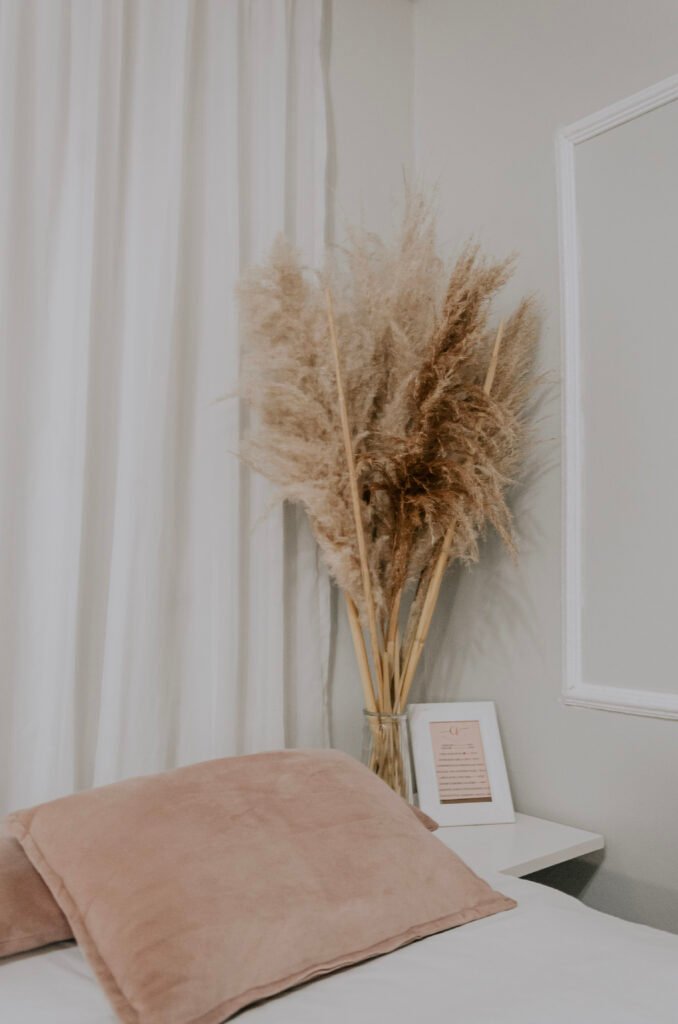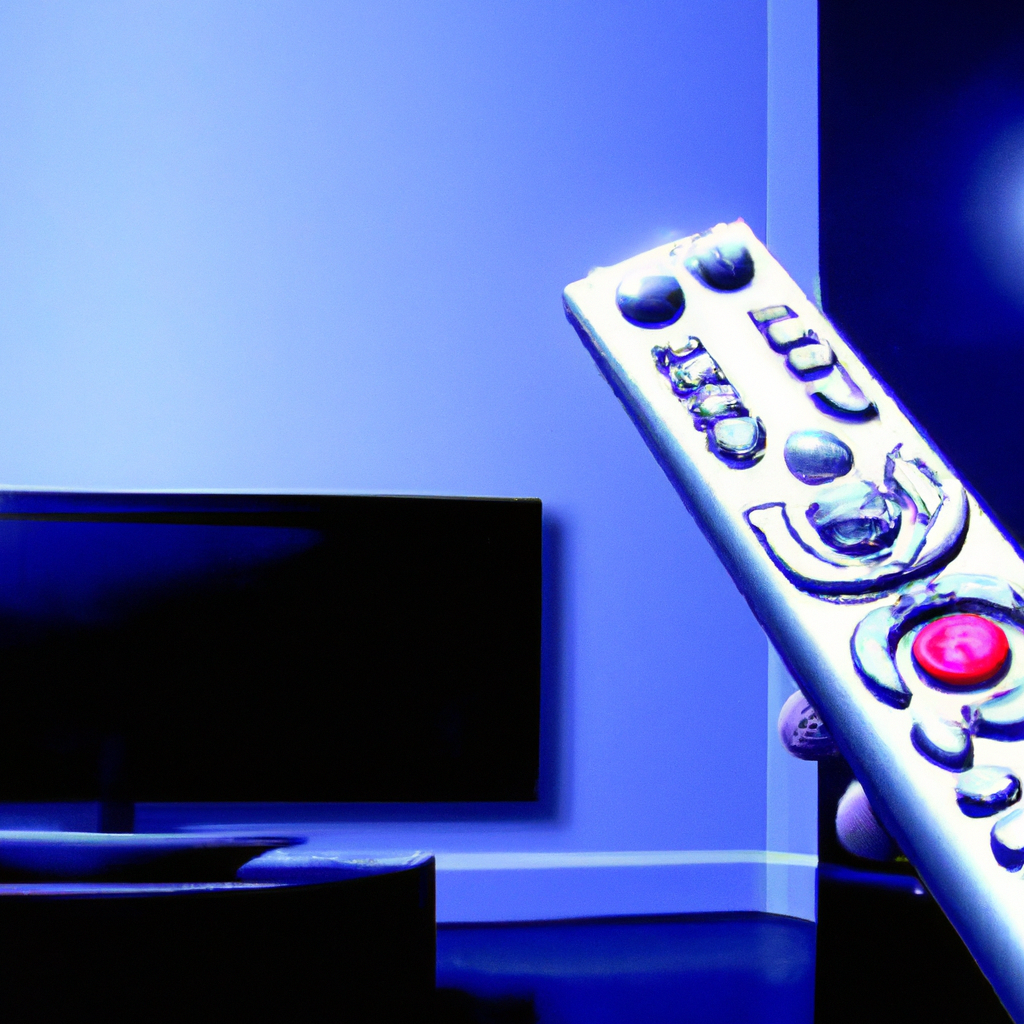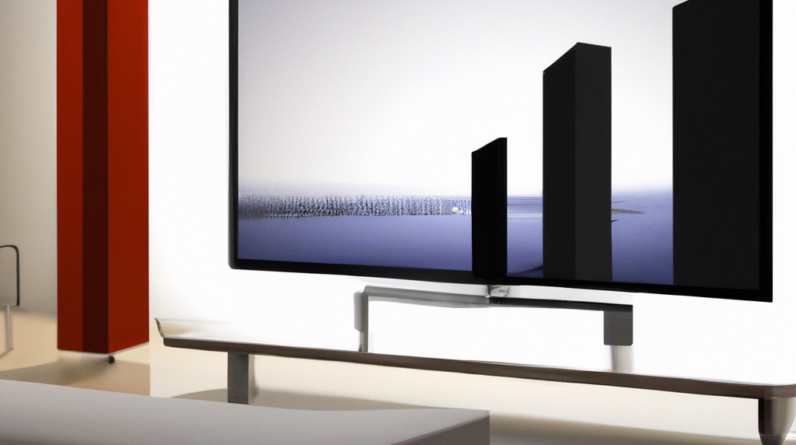
Imagine creating the perfect ambiance for your movie night without even leaving the comfort of your seat. Controlling the lighting in a media room can be a game-changer when it comes to enhancing your viewing experience. From dimming the lights to adjusting the color temperature, there are numerous ways to set the mood just right. Whether you prefer a high-tech approach with smart lighting systems or simple manual controls, this article explores the best methods to achieve ultimate lighting control in your media room. Get ready to transform your movie nights into a cinematic adventure.

Smart Lighting Systems
In today’s world of smart technology, it’s no surprise that there are numerous options available to control the lighting in a media room. Smart lighting systems offer convenience, flexibility, and a seamless integration with other smart devices. Let’s explore some of the best ways to control lighting in a media room using smart technology.
Wireless Switches and Dimmers
One of the easiest and most popular methods of controlling lighting in a media room is through the use of wireless switches and dimmers. These devices allow you to turn the lights on and off or adjust the brightness level without the need for traditional wall switches. With wireless switches and dimmers, you can control the lighting from anywhere in the room, providing ultimate convenience and flexibility.
Mobile Apps and Voice Control
Another fantastic option for controlling lighting in a media room is through mobile apps and voice control. Many smart lighting systems offer mobile apps that allow you to control the lights using your smartphone or tablet. This means you can easily adjust the lighting from the comfort of your seat without the need to get up and manually operate the switches. Additionally, with voice control technology such as Amazon Alexa or Google Assistant, you can simply give voice commands to control the lighting in your media room.
Integration with Home Automation Systems
If you have a comprehensive home automation system, integrating your lighting with it can take your media room to the next level. By connecting your smart lighting system to your home automation system, you can create customized lighting scenes that automatically adjust based on various factors, such as time of day, media activities, or even the mood you want to set. With this integration, you’ll have complete control over not only your media room lighting but also other smart devices in your home.
Motorized Blinds and Shades
Having control over lighting in a media room is not just limited to the lights themselves. The use of motorized blinds and shades can greatly enhance your control over natural light and privacy, allowing for an optimal viewing experience.
Types of Motorized Blinds and Shades
There are various types of motorized blinds and shades available on the market, each offering unique features and functionalities. Some popular options include roller shades, cellular shades, and Roman shades. Roller shades provide a sleek and modern look, while cellular shades offer excellent insulation properties. Roman shades, on the other hand, add an elegant touch to any media room. Choosing the right type of motorized blinds or shades depends on your personal style and the specific needs of your media room.
Controlling Blinds and Shades with Wireless Remotes
Similar to smart lighting systems, motorized blinds and shades can be controlled using wireless remotes. With a single press of a button, you can effortlessly raise or lower your blinds or shades to adjust the amount of natural light entering your media room. Wireless remotes give you the convenience of controlling your blinds and shades from anywhere within the room, without the need to manually operate them.
Integrating Blinds and Shades with Smart Systems
To further enhance your control over blinds and shades, consider integrating them with your smart lighting or home automation system. By doing so, you can synchronize the operation of your blinds and shades with your lighting, creating a more immersive and seamless media experience. For example, when you dim the lights in your media room, the blinds or shades can automatically lower to block out any unwanted glare or reflections on your screen.
Zoning and Ambient Lighting
Creating the right ambiance in a media room is crucial for an immersive and enjoyable viewing experience. Zoning and ambient lighting systems offer the perfect solution.
Using Zoning Controls for Different Areas
Zoning controls allow you to divide your media room into different areas, each with its own lighting settings. For example, you can designate one area for seating and another for a bar or snack area. By applying zoning controls, you can adjust the lighting levels in each area to suit the specific activities or preferences of the people using them. This ensures that everyone in the media room has the ideal lighting for their needs.
Creating Ambient Lighting Scenes
Ambient lighting plays a vital role in setting the overall mood and ambiance of a media room. With ambient lighting scenes, you can create different lighting setups for different types of media activities. For instance, you may want softer and dimmer lighting for movie nights, while brighter and more colorful lighting for gaming sessions. Creating ambient lighting scenes allows you to easily switch between different lighting setups with the touch of a button, enhancing the overall atmosphere and immersiveness of your media room.
Integrating Zoning and Ambient Lighting Systems
To fully utilize the benefits of zoning and ambient lighting, consider integrating these systems with your smart lighting or home automation system. By doing so, you can have centralized control over both the zoning controls and ambient lighting scenes, simplifying the management of your media room’s lighting. You can even sync the lighting changes with other media room activities, such as starting a movie or launching a gaming console, to create a truly immersive experience.
Color Temperature and LED Lighting
The color temperature of lighting in a media room can significantly impact the viewing experience. LED lighting offers the flexibility to adjust color temperature and provides other benefits for media rooms.
Understanding Color Temperature
Color temperature refers to the warmth or coolness of the light emitted by a lighting source. It is measured in Kelvin (K). Lower Kelvin values (2700-3000K) produce warm white or yellowish light, mimicking the warmth of traditional incandescent bulbs. Higher Kelvin values (5000K or above) produce cool white or bluish light, resembling natural daylight. Understanding color temperature is essential because it can affect the perceived colors on the screen and the overall atmosphere of the media room.
Benefits of LED Lighting in Media Rooms
LED lighting offers numerous benefits for media rooms. Firstly, LEDs are highly energy-efficient, consuming less power compared to traditional lighting sources, resulting in energy and cost savings. Secondly, LEDs have a longer lifespan, reducing the frequency of bulb replacements. Additionally, LED bulbs generate less heat, which is particularly beneficial for media rooms as it helps maintain a comfortable viewing environment. Lastly, LED lighting provides excellent color rendering, enabling accurate representation of colors on the screen, enhancing the visual quality of movies, shows, and games.
Controlling Color Temperature with Smart Systems
With smart lighting systems, you can easily control the color temperature of LED lights in your media room. Compatible LED bulbs allow you to switch between warm and cool lighting depending on your preference or the activities you are engaged in. Whether you want warm light for a cozy movie night or cool light for an energetic gaming session, smart systems give you the flexibility to adjust the color temperature with just a few taps on your smartphone or through voice commands.

Smart Sensors and Motion Detectors
Smart sensors and motion detectors provide a convenient and energy-efficient way to control lighting in a media room.
Using Motion Sensors for Automatic Lighting Control
Motion sensors are an excellent addition to any media room lighting setup. By installing motion sensors in strategic locations, such as near the entrance or seating area, the lights can automatically turn on when someone enters the room and turn off when there is no detected motion for a specified period. This hands-free lighting control ensures that you never have to fumble for a light switch in the dark, providing both convenience and energy savings.
Integrating Sensors with Smart Lighting Systems
To optimize the performance of motion sensors, consider integrating them with your smart lighting system. With integration, you can customize how the lights respond to motion detection, such as the duration they stay on or the specific lights that are activated. Additionally, by connecting with your home automation system, you can further enhance the functionality of motion sensors by triggering other actions, such as adjusting the blinds or activating specific lighting scenes.
Customizing Sensor Settings for Media Rooms
Every media room is unique, and it’s essential to customize the settings of sensors to cater to your specific requirements. For example, you may want to adjust the sensitivity of the motion sensors to avoid lights turning on unnecessarily due to slight movements, such as people shifting in their seats. Additionally, you can set different lighting zones or profiles for various media room activities, allowing the sensors to adapt to specific lighting needs automatically.
Curtains and Draperies
Curtains and draperies not only add style and elegance to a media room but also provide control over natural light and privacy.
Motorized Curtain Control
Motorized curtain control offers convenience and precise control over the amount of natural light entering your media room. With motorized systems, you can easily open or close the curtains or adjust their position with the touch of a button. This eliminates the need to manually operate heavy and cumbersome curtains, making it effortless to create the perfect viewing environment.
Light-Blocking and Light-Diffusing Options
Depending on your preferences and the layout of your media room, you may choose curtains or draperies with different light-blocking or light-diffusing properties. Light-blocking options provide optimal light control by eliminating outside light sources completely, ensuring a pitch-black environment for a cinematic experience. On the other hand, light-diffusing curtains or draperies allow some natural light to enter while providing a level of privacy, creating a cozy and inviting atmosphere.
Syncing Curtain Control with Media Activities
To further enhance the control and automation of your media room, consider syncing the curtain control with media activities. For example, you can program the curtains to automatically close when you start a movie, creating a blackout effect and eliminating any glare on the screen. Similarly, you can set them to open gradually when you pause the movie for a break, allowing natural light to filter in without disrupting the viewing experience. Syncing your curtain control with media activities creates a seamless and immersive environment in your media room.

Blackout Solutions
Creating complete darkness in a media room is essential to eliminate any unwanted light that can interfere with the viewing experience. Here are some blackout solutions to consider.
Installing Blackout Shades or Drapes
One of the most effective ways to achieve complete darkness in a media room is by installing blackout shades or drapes. These specially designed window coverings are made of light-blocking materials that prevent any light from entering the room. When closed, blackout shades or drapes completely block out sunlight and other external light sources, ensuring an optimal viewing environment.
Using Blackout Window Films
If you already have existing blinds or shades in your media room, you can enhance their light-blocking capabilities by applying blackout window films. Blackout window films are adhesive films that can be easily applied to the interior surface of windows. These films effectively block out light, making them an affordable and convenient solution to create a blackout effect in your media room.
Creating Complete Darkness for Optimal Viewing
To achieve complete darkness for optimal viewing, it’s crucial to combine multiple blackout solutions. Installing blackout shades or drapes, using blackout window films, and ensuring proper sealing around windows all work together to eliminate any light leakage. By creating a blackout environment, you can enjoy your favorite movies, shows, or games without any distractions and with the utmost clarity.
Lighting Design and Placement
The key to creating the perfect lighting environment in a media room lies in thoughtful design and strategic placement of lighting fixtures.
Task Lighting for Seating Areas
Task lighting is essential to ensure comfortable viewing from seating areas. Placing adjustable reading lights or floor lamps near seating areas allows you to have the right amount of illumination for reading or enjoying snacks during a movie. Additionally, installing low-level pathway lighting along the floor can enhance safety while moving around the room without creating glare on the screen.
Accent Lighting for Decorative Elements
Accent lighting can add a touch of elegance and highlight specific decorative elements in a media room. By strategically placing wall sconces or uplights, you can draw attention to artwork, architectural features, or any other elements you want to showcase. Accent lighting adds depth and visual interest to the room while creating a cozy and inviting atmosphere.
Avoiding Glare and Reflections
To ensure an optimal viewing experience, it’s crucial to minimize glare and reflections in a media room. Here are some tips to achieve this:
- Place lighting fixtures away from the screen to prevent direct glare.
- Opt for recessed or indirect lighting options to avoid harsh reflections on the screen.
- Use matte finishes or light-diffusing materials on walls and ceilings to minimize reflections.
- Consider using blackout shades or drapes to block out any external light sources that may cause glare or reflections.
By carefully considering lighting design and placement, you can create a comfortable and visually appealing media room that enhances your overall entertainment experience.

Lighting Control Panels
Lighting control panels offer centralized control over multiple lighting features in a media room, making it easy to create various lighting scenes and effects.
Centralized Control of Multiple Lighting Features
Lighting control panels act as a centralized hub, allowing you to control multiple lighting fixtures simultaneously. With a dedicated control panel, you can adjust the brightness, color, or color temperature of different lights in your media room with just a few taps. This eliminates the need to operate individual switches or dimmers, providing streamlined and convenient control over your lighting setup.
Pre-set Lighting Scenes and Effects
Lighting control panels allow you to pre-set and save different lighting scenes and effects that can be activated at the touch of a button. For example, you can create a “Movie Night” scene that dims the lights, closes the curtains, and adjusts the color temperature to create a cozy and immersive environment. The ability to save and recall customized lighting scenes ensures that you can effortlessly set the perfect mood for any media activity.
Integration with Media Room Control Systems
For a truly integrated media experience, consider integrating your lighting control panel with your media room control system. By doing so, you can synchronize the operation of lighting scenes with other media room activities. For instance, when you start watching a movie, the control system can automatically activate the corresponding lighting scene, adjusting the lights, blinds, and other devices for an enhanced viewing experience. Integration ensures seamless control and a truly immersive media room environment.
Energy Efficiency and Smart Lighting
Energy efficiency is a significant consideration when it comes to lighting in a media room. Smart lighting systems offer innovative solutions to reduce energy consumption and optimize efficiency.
Benefits of Energy-Efficient LED Bulbs
LED bulbs are highly energy-efficient compared to traditional incandescent or fluorescent bulbs. They consume significantly less power, resulting in reduced energy costs. LED bulbs also have a longer lifespan, meaning fewer replacements and less waste. Additionally, LED bulbs don’t emit excessive amounts of heat, reducing the load on cooling systems in your media room. Incorporating energy-efficient LED bulbs into your lighting setup ensures that you are not only saving energy but also enjoying the benefits of longer-lasting and cooler lighting.
Smart Lighting Systems for Energy Management
Smart lighting systems offer advanced energy management features to help you further reduce your energy consumption. These systems allow you to create schedules or timers to control when the lights turn on or off, ensuring that energy is not wasted when the media room is not in use. Additionally, occupancy sensors and daylight sensors can be integrated into the smart lighting system to automatically adjust the lighting levels based on occupancy and natural light availability, maximizing energy efficiency.
Automated Scheduling and Usage Tracking
Smart lighting systems enable automated scheduling, allowing you to set specific times for the lights to turn on or off. This feature is particularly useful for regular media room activities, such as movie nights or gaming sessions. By setting up automated schedules, you can have peace of mind knowing that the lights will always be ready when you need them without wasting energy when they are not required. Furthermore, usage tracking features in smart lighting systems provide insights into your energy consumption, allowing you to identify areas where further energy-saving measures can be implemented.
In conclusion, the best ways to control lighting in a media room involve the use of smart technology and thoughtful design. Wireless switches and dimmers, mobile apps, and voice control offer convenience and flexibility, while integrating with home automation systems takes control to a higher level. Motorized blinds and shades provide precise control over natural light and privacy. Zoning and ambient lighting create the perfect atmosphere for different media activities. Color temperature adjustment with LED lighting enhances visual quality. Smart sensors and motion detectors offer hands-free lighting control. Motorized curtains and draperies add style and functionality. Blackout solutions provide complete darkness for optimal viewing. Thoughtful lighting design and placement avoid glare and reflections. Lighting control panels offer centralized control and pre-set scenes. Finally, energy efficiency is achieved through the use of LED bulbs, smart lighting systems, and automated scheduling. By implementing these control methods and design techniques, you can create a truly immersive and enjoyable media room experience.







